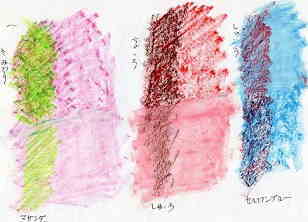②「芸術作品における弁証法の法則と実存論的存在論」
"The rule of dialectic and the existential ontology in works of art
a.実存的存在論と芸術作品Existential ontology and works of art
b,エンテレケイヤEntelekeia P19
C,永遠eternityP20
a.実存的存在論と芸術作品
最も良いことは、それが完全にあなたの手の届かないところにあるということです。
それは生まれてこなかったもの、存在しないもの、何もないものです。しかし、あなたにとって次の良いことはすぐに死ぬこ
とです。
彼らにとって、最悪の事態は彼らが最終的に死ぬということです、
そして次の最悪の事態は いつか彼らは死ななければならないということです。それが意味するところです(ニーチェ)
変化の根拠であるのは 対自の時間であって、時間制を根拠づけるのは 変化であるのではない。ここで問題なのは 存在が全体的に自己を変形し、過去の中に沈みゆくと同時に、
未来に向かって 「何も無い」から生ずるという存在にとっての必然性である。(サルトル)
*事物的に存在していないものとしての実存と言う意味です。
現存在は 歴史的であると言う命題は 実存論的、存在論的な基礎的陳述であることが確証される
了解は 存在しうることの存在では無く、事物的に存在していないものとしての実存と言う意味で存在している。
この実存論的存在は 己自身に対して取るべき立場を己自身に即して開示している。こうした実存範疇の構造を更に、いっそう鋭く捉える事が肝要なのである。さすれば、己自身に即した あなただけの自由さによって、あらぬものが開示してくる。
了解は その時々に 世界内存在としての現存在の完全な開示性に関係するゆえ、
了解が己を置き入れる事は 全体としての企投の一つの実存論的な変様なのである。実存に関係するこの視を 透視性と名付ける。
現象的に「視覚的」のうちに十分に仕上げるためには これらの実存範疇を いっそう具体的にする必要がある。
了解の完成を解釈と名つける。
あらぬものが開示されてくるこの視を透視性と懐けたものが了解であり、己自身になるのである。
了解されているのは 厳密に解すれば 意味ではなく、存在者なのである。
意味とは あるものの了解可能が その内に保たれている当のもののことなのである。

Existential ontology and works of art
The best thing is that it is completely out of your reach. It is something that was not born, something that does not exist, something that is nothing.
But the next best thing for you is to die soon.
For them, the worst thing is that they eventually die,
And the next worst thing is that someday they have to die. That's what it means (Nietzsche)
It is one's own time that is the basis of change, and it is not change that grounds the time system. The problem here is that at the same time as existence as a whole transforms itself and sinks into the past,
It is a necessity for existence that arises from ``nothing'' towards the future. (Sartre)
*It means existence as something that does not physically exist.
The proposition that present existence is historical is established as a fundamental existential and ontological statement.
Understanding exists not in the sense of the existence of something that can exist, but in the sense of the existence of something that does not physically exist.
This existentialist existence discloses the position one should take towards oneself in accordance with oneself. It is essential to grasp the structure of these existential categories even more sharply. If you do this, things will be revealed to you through his freedom that is uniquely yours.
Understanding is because he is concerned with the complete disclosure of the present being as a being in the world from time to time.
Understanding's inclusion of itself is an existential variation of the project as a whole. This perspective related to existence is called clairvoyance.
In order to fully complete the phenomenally ``visual'' sense, he needs to make these existential categories even more concrete.
The completion of understanding is called interpretation.
Understanding is what we call clairvoyance, where things that are not real are revealed to us, and we become ourselves.
Strictly speaking, what is understood is not the meaning, but the being.
Meaning is that which he is capable of understanding, but which he retains within himself.
Link
基本構成
newpage91.html へのリンク
sub23.哲学者の理論と芸術表現
index.html
.